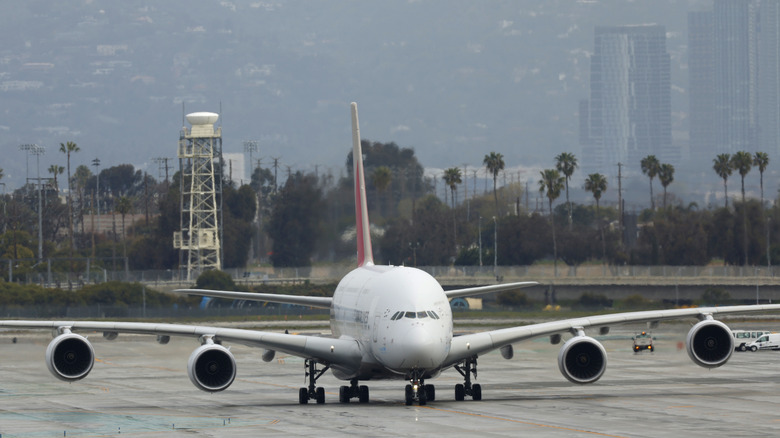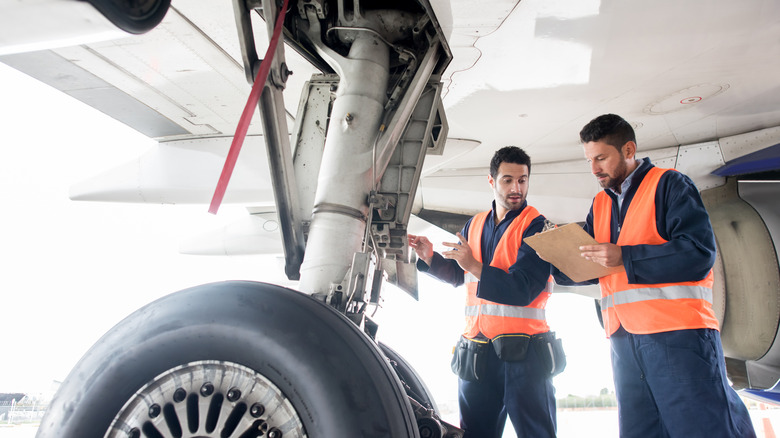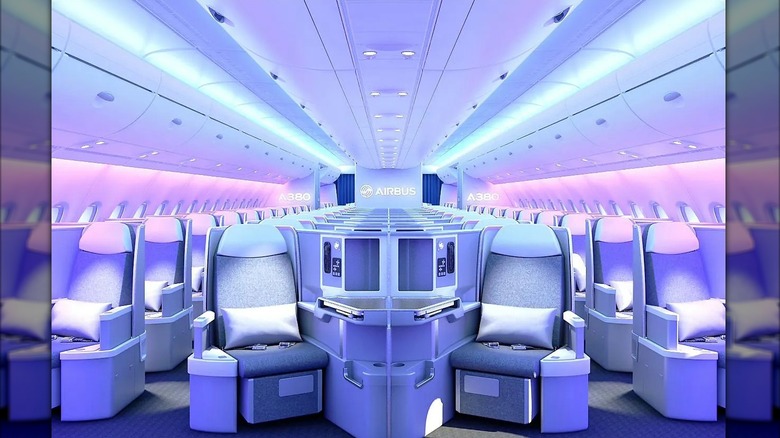Which Passenger Plane Has The Largest Wingspan?
With an astounding 262.47-foot wingspan, the Airbus A380 is a gargantuan aircraft that holds several records. It became the world's largest passenger plane in 2007 and remains the largest plane currently flying in 2025. Its the only jet airliner model that features two decks that both stretch the length of the aircraft. This enables seats for more than 500 passengers, or a variety of cabin designs that can include amenities like lounges, luxury accommodations, and even showers.
However, in order to get this behemoth into the air, its wings have been engineered and built using specialized aluminum alloys, allowing remarkable levels of flex, along with a specialized shape to reduce drag. One of the ways you can identify an A380 is by the way the wings tilt upward at the ends. However, this flexibility is even more pronounced when cruising at altitude, where the tips of the wings can bend up to 13 feet.
Of course, this ability to change shape is intentional and helps the massive jet counteract turbulence. Although, for those afraid of flying, even though the aircraft is performing as designed, a window seat overlooking the flexing wing may not be the best idea.
Its size makes operations more difficult for airports and maintenance is more extensive
Airbus has ceased production on the A380, despite its achievements within the aviation industry. Its significant dimensions (including wingspan) mean that these aircraft can only operate out of certain airports that have either been built with the A380 in mind, or modified to handle such a large craft. This model, in particular, was hit hard a few years ago during travel restrictions, where the airlines required full flights of hundreds of passengers to keep operations going. When the number of travelers cratered, air transporters like China Southern Airlines and Malaysia Airlines, among others, dropped the A380 from their lineup.
While the massive jet has somewhat rebounded since, some maintenance concerns have become apparent. How airplanes are maintained and how often it's done is no small feat, often requiring what amounts to a small army of knowledgeable technicians. The European Union Aviation Safety Agency has acknowledged that the scale of the A380 aircraft makes it more challenging to upkeep than other models. In addition, the agency also noted double the amount of airworthiness directives (legally enforceable safety corrections for aircraft components) for the A380 versus Boeing's larger aircraft.
Could air travel see an even larger passenger jet in the future?
It's possible that eventually an aviation manufacturer might attempt another massive aircraft like the A380. However, the market just isn't trending toward jumbo jets at the moment. In fact, the story of why the A380 was shelved is similar to why three-engine airliners were discontinued. Smaller planes, with fewer engines are more efficient to operate, and thus generate a better profit for airlines. The A380 requires four engines and burns significant amounts of fuel due to its size. For example, a Boeing 787's two engines consume around 5400 liters of fuel every 60 minutes. Where as an A380 uses up greater than two times that amount every hour.
In addition, another jumbo double-decker jet would have to grapple with the same issues that plague the A380. With only around 140 airports around the world that can fit a jet of this magnitude, it becomes an even trickier process to ensure each flight is filled. For now, airlines are banking on smaller aircraft, with more efficient operation, that can easily fit in most airports without additional accommodations. These flights can be filled easier, and cost less to run.


